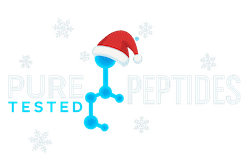Oral BPC-157: Mechanisms & Peer-Reviewed Evidence
This article summarizes what the scientific literature reports about the oral (per-oral) route of the stable gastric pentadecapeptide BPC-157. It focuses on mechanisms and representative animal studies. It does not provide dosages or usage regimens and does not suggest any use outside physician-directed care.
- Origin A pentadecapeptide isolated from gastric juice and studied for roles in mucosal integrity and cytoprotection.
- Scope here Oral route only—mechanistic rationale and representative animal studies.
Why the Oral Route Is Notable
Peer-reviewed work describes BPC-157 as stable in human gastric juice and discusses its evaluation in gastrointestinal and soft-tissue models, which provides a biochemical rationale for per-oral investigation. See review: Sikiric et al., 2011 (PubMed).
Mechanisms Linked to Oral Delivery
1) Gastric cytoprotection & mucosal integrity
As a peptide native to the gastric environment, BPC-157 has been discussed in the context of Robert’s cytoprotection/adaptive cytoprotection paradigm, where maintenance of mucosal integrity and microvascular stability is central. Oral exposure aligns with this mechanism-first rationale (reviewed in Sikiric et al., 2011).
2) Vascular & extracellular-matrix signaling
Across preclinical reports, BPC-157 has been associated with angiogenic and ECM-related signaling in injured tissues. While routes vary by model, these pathways are frequently cited as underpinning observed tissue effects and are mechanistically consistent with local exposure following oral delivery (reviewed in Sikiric et al., 2011).
Representative Animal Evidence Using Per-Oral Delivery
Ligament injury model (rats)
In a medial collateral ligament transection model, investigators reported that BPC-157 was effective when provided per-orally in drinking water, alongside other routes, with outcomes consistent with improved ligament healing endpoints. See: Cerovecki et al., 2010 (PubMed).
Limitations & Translational Considerations
- Species & model differences: Most oral-route data are from rodent studies; effects and exposure profiles may not translate directly to humans.
- Study heterogeneity: Injury types, endpoints, and assessment windows vary widely across publications.
- Regulatory status: Investigational peptides may not be approved for human use; any clinical consideration belongs strictly under physician care within applicable regulations.
1–2 Peer-Reviewed References
